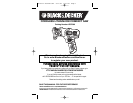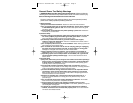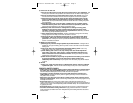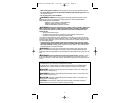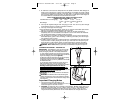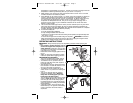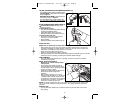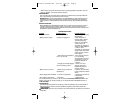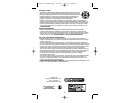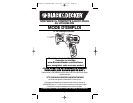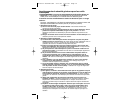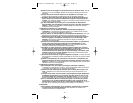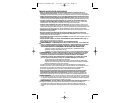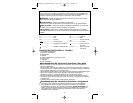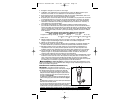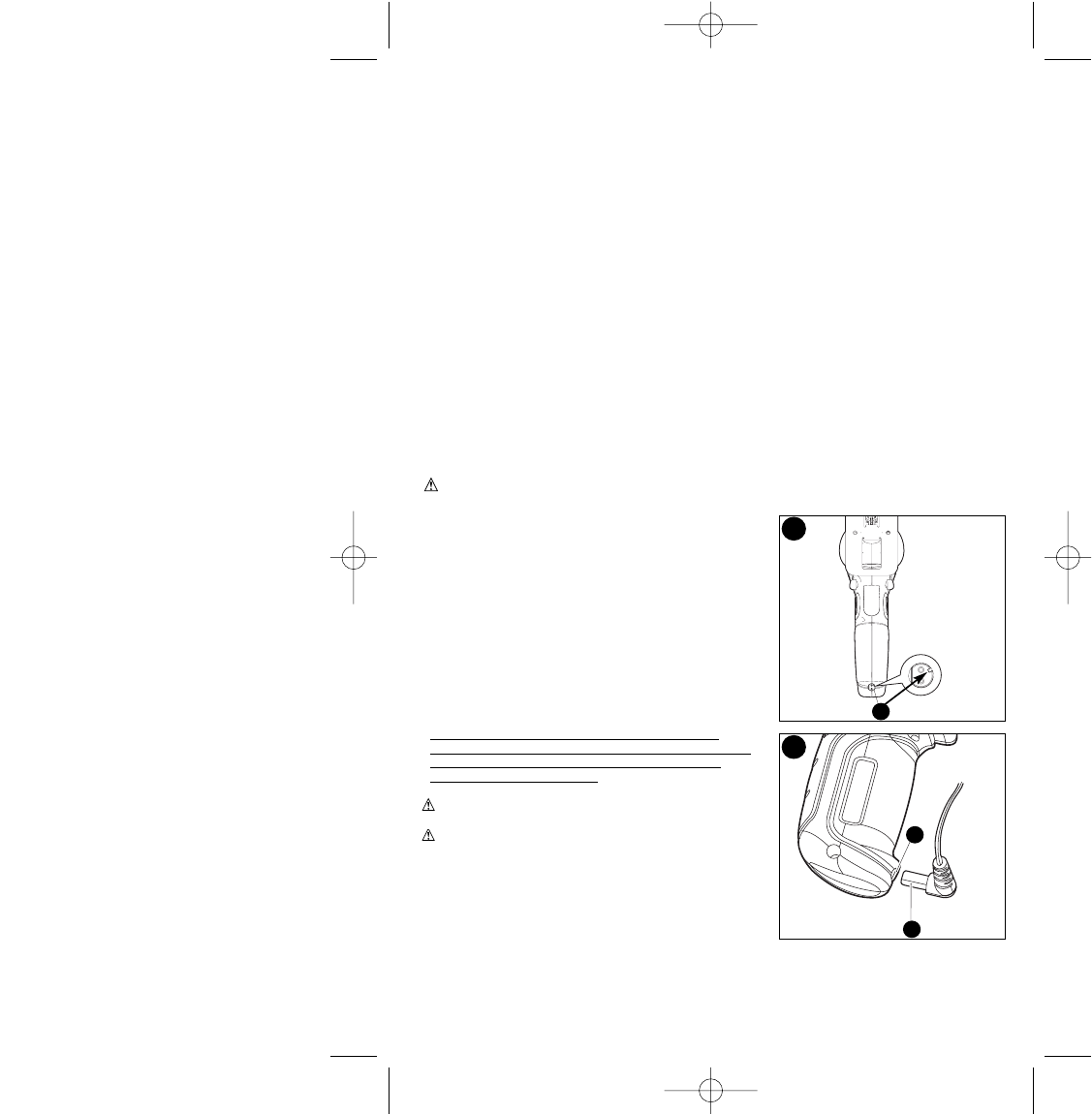
6
a. An extension cord must have adequate wire size (AWG or American Wire Gauge) for
safety, and to prevent loss of power and overheating. The smaller the gauge number
of the wire, the greater the capacity of the cable; that is, 16 gauge has more capacity
than 18 gauge. When using more than one extension to make up the total length, be
sure each extension contains at least the minimum wire size.
CHART FOR MINIMUM WIRE SIZE (AWG)OF EXTENSION CORDS
NAMEPLATE RATING AMPS – 0 – 10.0
Total Extension Cord Length (ft)
0-25 26-50 51-100 101-150
(0-7,6m) (7,6-15,2m) (15,2-30,4m) (30,4-45,7m)
Wire Gauge 18 16 16 14
8. Use only the supplied charger when charging your tool. The use of any other charger
could damage the tool or create a hazardous condition.
9. Use only one charger when charging.
10.Do not attempt to open the charger. There are no customer serviceable parts inside.
Return to any authorized Black & Decker service center.
11.DO NOT incinerate the tool or batteries even if they are severely damaged or
completely worn out. The batteries can explode in a fire. Toxic fumes and materials
are created when lithium ion battery packs are burned.
12. Do not charge or use battery in explosive atmospheres, such as in the presence of
flammable liquids, gases or dust. Inserting or removing the battery from the charger
may ignite the dust or fumes.
13. If battery contents come into contact with the skin, immediately wash area with mild
soap and water. If battery liquid gets into the eye, rinse water over the open eye for
three minutes or until irritation ceases. If medical attention is needed, the battery
electrolyte is composed of a mixture of liquid organic carbonates and lithium salts.
WARNING: Burn hazard. Battery liquid may be flammable if exposed to spark or
flame.
CHARGING PROCEDURE - FIGURE B & B1
IMPORTANT: The batteries in your tool are not fully
charged at the factory. Before attempting to charge
them, thoroughly read all of the safety instructions.
(1) The charging socket (3) is keyed to lock out other
chargers. Align the tab in the charger plug (8) with the
key in the charging socket (see figure B).
(2) Plug the charger output plug (8) into the charging
socket (3) of the tool as shown in figure B1.
(3) Plug the charger (7) into any standard 120 Volt 60
Hz electrical outlet.
(4) Let the tool charge initially for at least 10 hours.
After the initial charge, your tool should be fully
charged in 10 hours from a fully discharged condition.
Recharge discharged batteries as soon as
possible after use or battery life may be greatly
diminished. For longest battery life, do not
discharge batteries fully. It is recommended that the
batteries be recharged after each use.
WARNING: Do not use tool while it is connected to
the charger.
WARNING: Fire Hazard. When disconnecting the
charger from the tool, be sure to unplug the charger
from the outlet first, then disconnect the charger cord
from the tool.
Important Charging Notes
1. Your tool was sent from the factory in an
uncharged condition. Before attempting to use it, it
must be charged for at least 10 hours.
2. CAUTION: To reduce the risk of damage to the batteries, NEVER charge them in an
air temperature below 40°F (4.5°C) or above 105°F (40.5°C). Also, NEVER charge
them if the battery temperature is below 40°F (4.5°C) or above 105°F (40.5°C).
Longest life and best performance occurs when batteries are charged with an air
B1
3
8
B
3
90547733 LPS7000 Saw 6/11/09 7:21 AM Page 6



